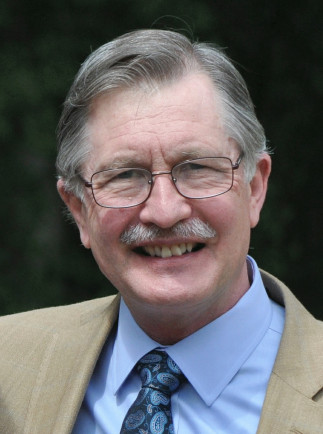Richard T. Oakley, FRSC, Professor of Chemistry, Department of Chemistry, University of Waterloo, Waterloo, Ontario, N2L 3G1, Canada.
In principle, the unpaired electron furnished by a molecular radical should be capable of serving as a carrier of charge [1]. The problem with this idea lies in the fact that there is an intrinsically high Coulombic barrier U to charge transfer associated with any system possessing a half-filled band (f = ½) electronic structure. As a result organic radicals are Mott insulators. Overcoming the charge repulsion barrier requires that intermolecular hopping interactions (t), and hence the electronic bandwidth W, be sufficiently large to offset U. When W > U, the Mott-Hubbard gap ΔE should vanish, and a metallic state prevail.
Our approach to realizing such a system has focused on the use sulfur and selenium based heterocyclic radicals. The combination of heavy (soft) heteroatoms and a highly delocalized spin distribution decreases U, while the enhanced intermolecular interactions afforded by the spatially extensive 3p/4p valence orbitals of S/Se increases t and W. This chemical control, coupled with the aid of physical pressure to amplify W, has produced the first organic radical metals [2]. We have also demonstrated that heavy atom radicals are effective in the design of organic ferromagnets [3], and that the accompanying spin-orbit effects give rise to magnetic anisotropies normally associated with d-block metals [4].
Traditionally, the downside of using heavy atom radicals as functional materials has been their tendency dimerize to a CDW state, a transformation which quenches spin and charge carriers. Recently, however, we have demonstrated the photoinduced dissociation of radical dimers (S = 0) to afford long lived metastable radical states (S = ½). These materials offer appealing opportunities for the development of metal-free photomagnetic switching devices [5].
In this presentation I will summarize recent work in these three related areas, that is, the use of neutral radicals in the design of organic (i) magnetic, (ii) photomagnetic and (iii) conductive materials.
References:
[1] N. H. McCoy and W. C. Moore, J. Am. Chem. Soc. 33, 273 (1911).
[2] J. W. L. Wong, A. Mailman, K. Lekin, S. M. Winter, W. Yong, J. Zhao, S. V. Garimella, J. S. Tse, R. A. Secco, S. Desgreniers, Y. Ohishi, F. Borondics and R. T. Oakley, J. Am. Chem. Soc. 136, 1070(2014).
[3] C. M. Robertson, A. A. Leitch, K. Cvrkalj, R. W. Reed, D. J. T. Myles, P. A. Dube and R. T. Oakley, J. Am. Chem. Soc. 130, 8414 (2008).
[4] S. M. Winter, R. T. Oakley, A. E. Kovalev and S. Hill, Phys. Rev. B. 85, 094430 (2012).
[5] H. Phan, K. Lekin, S. M. Winter, R. T. Oakley and M. Shatruk, J. Am. Chem. Soc. 135, 15674 (2013).
Site web du groupe du Prof. Oakley
Cette conférence est présentée par le RQMP Versant Nord du Département de physique de l'Université de Montréal et le Département de génie physique de Polytechnique Montréal.

